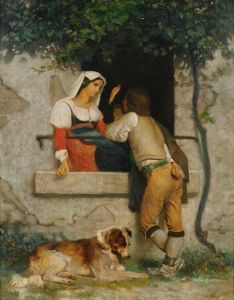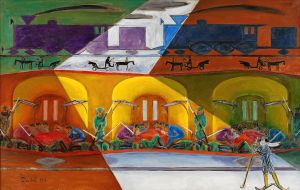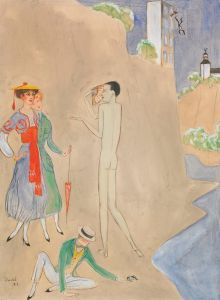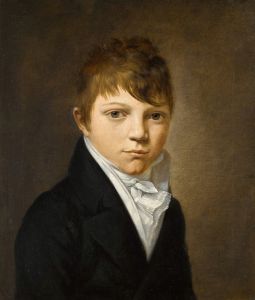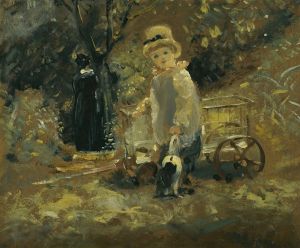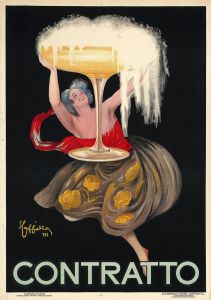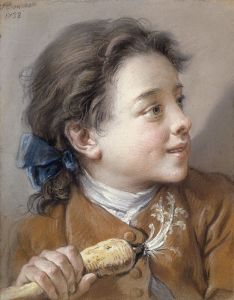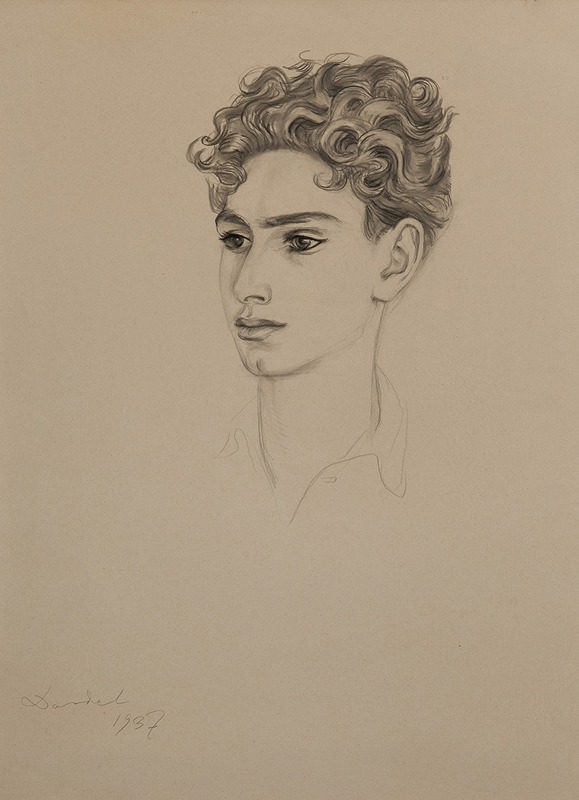
Italiensk pojke
A hand-painted replica of Nils Dardel’s masterpiece Italiensk pojke, meticulously crafted by professional artists to capture the true essence of the original. Each piece is created with museum-quality canvas and rare mineral pigments, carefully painted by experienced artists with delicate brushstrokes and rich, layered colors to perfectly recreate the texture of the original artwork. Unlike machine-printed reproductions, this hand-painted version brings the painting to life, infused with the artist’s emotions and skill in every stroke. Whether for personal collection or home decoration, it instantly elevates the artistic atmosphere of any space.
Nils Dardel's Italiensk pojke (translated as Italian Boy) is a painting created by the Swedish modernist artist Nils Dardel (1888–1943). Dardel is known for his distinctive style that blends elements of modernism, post-impressionism, and symbolism, often characterized by vibrant colors, stylized figures, and a sense of narrative or theatricality. His works frequently explore themes of identity, emotion, and human relationships.
Italiensk pojke is one of Dardel's lesser-documented works, and specific details about its creation, such as the exact year it was painted or its intended meaning, are not widely available in historical records. The painting depicts a young boy, presumably of Italian origin, rendered in Dardel's characteristic style. The composition reflects Dardel's interest in capturing individuality and emotion, often through exaggerated or stylized forms.
Dardel spent much of his career traveling across Europe, and his exposure to various cultures and artistic movements influenced his work. Italy, in particular, was a significant source of inspiration for many artists of his time, and it is possible that Dardel's travels in the region informed the creation of Italiensk pojke. However, there is no concrete evidence to confirm the specific circumstances under which this painting was conceived.
The painting is part of Dardel's broader body of work, which includes portraits, narrative scenes, and fantastical imagery. While Italiensk pojke may not be as widely recognized as some of his other pieces, such as The Dying Dandy (1918), it nonetheless reflects his unique artistic vision and his ability to convey personality and mood through his art.
As with many of Dardel's works, Italiensk pojke demonstrates his skill in blending realism with a more decorative, almost whimsical approach to form and color. The painting is believed to be held in a private collection or a museum, though its current location and ownership are not definitively documented in public records.
Due to the limited availability of detailed information about Italiensk pojke, much of its historical and cultural context remains unclear. However, it remains an example of Nils Dardel's contribution to modernist art and his ability to capture the essence of his subjects in a distinctive and memorable way.





